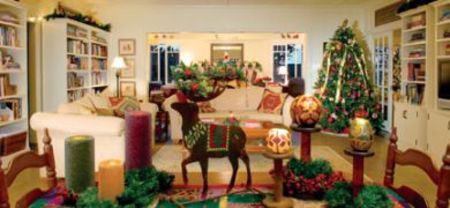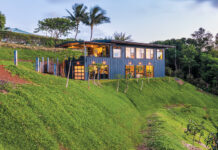Rita Goldman | Photography by Tony Novak-Clifford
 This December, a friend we’ll call Vera will unlock the crawl space beneath her Sand Hills home and haul out her formidable collection of Christmas decorations: garlands and ornaments, stockings and Santa hats . . . and enough teddy bears to fill a menagerie.
This December, a friend we’ll call Vera will unlock the crawl space beneath her Sand Hills home and haul out her formidable collection of Christmas decorations: garlands and ornaments, stockings and Santa hats . . . and enough teddy bears to fill a menagerie.
It’s a sentiment she understands.
“When I was kid, it was always magical when the Christmas things came out of the cedar closets. There was the ritual of seeing which Christmas lights still worked. . . .” Then as now, the last thing up, the last thing put away, was the crèche. “We keep the crèche up until mid-January,” she says, “to bless the house metaphorically.”
Along with the ornaments come memories. Over the five days she’ll spend decorating the house, Vera enjoys retrieving each old treasure and thinking about what’s happened in the year since she saw it last.
“My mom was good about the holidays,” she recalls. “With six kids, she was always tired, but she hauled the Christmas stuff out every year. There’d always be a party, and my sisters and I learned how to bake all these great holiday treats. The baking my kids and I do, I did as a child.
“My parents were great partiers. That’s where the cioppino came from. It’s a huge Christmas Eve tradition in my family.” The recipe? “Put in more red wine than you think you need, and use fresh, fresh herbs. That’s all I’ll say; it’s my mom’s recipe. I’ve been making it for twenty years. She’s been making it for forty.”
Nine years ago, Vera’s family was living Upcountry, and driving to town each day for work and school. When she found this old house, she fell in love. “It was languishing on the market, and needed repairs. We traded the commute for a ton of work. But I love to entertain, and this is a great party house.”
The house sits high on a ridge, in a tract developed in the 1920s by David T. Fleming, who started West Maui’s first pineapple plantation at what is now Kapalua. The architect, William D’Esmond, also designed Pa‘ia Elementary School, one of several Maui structures on the National Register of Historic Places.
The home’s first owner was Ralph Harper Wilson, whom The Maui News, in May of 1919, described as a “well known Honolulu automobile man.” Wilson had just been recruited by the von Hamm-Young Company to manage its new Maui branch. The following year, he married Miss Ruby McVay, a “domestic science teacher in the Maui High and Grammar School . . . [and] a charming and highly popular young lady.”
In 1927, the Wilsons moved into the newly completed home—a domicile so stylish, it was featured in an advertisement for Maui Dry Goods & Grocery:
In the ad’s grainy photograph, the home’s façade is sturdy and symmetrical, its recessed entrance bracketed by decorative trim and windows that would have had a commanding view of Maui’s Central Valley. Years later, the lot was divided into three parcels. Faced—literally—with much closer neighbors, the owners reversed the orientation of the house, enclosing the original entrance and installing a fireplace in its center. But there are still plenty of views.
“On a clear day, you can see to the Big Island from the roof,” says Vera. “My son can climb up there and do a surf report of Ho‘okipa. For me, the priceless view is ‘Iao Valley. Maybe two other properties on the island have that view.”
She leads the way into the spacious kitchen, with its restored original cabinetry.
“The kitchen and two front bedrooms were remodeled by a previous owner,” she says, “but their renovation was very sensitive to the authenticity of the house. The master bath was also renovated, but the sink and tub are from 1927. My own additions have been in the spirit of that era.”
A house this old has its share of idiosyncrasies. “The maintenance is constant, and the roof makes funny noises in kona weather. It’s been plumbed so many times, it’s a joke when I have to call a plumber in.” Still, Vera says, “I wasn’t put off by its age. I grew up in the house my father and grandfather grew up in. The core of the house was between 100 and 150 years old. My great-grandfather had thirteen kids; the house grew along with the family.”
And though that house was in California, it’s not so farfetched to say that Vera and her Sand Hills home were made for one another.
“My great-grandfather came from the same place in Portugal as most of Maui’s Portuguese. The story is that he and his two brothers came around the Horn, but stopped in California at a whaling station. They were whalers, but the whaling trade was dying by then, so the brothers became dairy farmers.”
Three generations later, Vera completed the journey—and settled at last in an old Sand Hills dwelling that each year welcomes the spirit of Christmases past and present.





